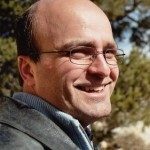Link to Pubmed [PMID] – 34839713
Link to DOI – 10.1098/rstb.2020.0475
Philos Trans R Soc Lond B Biol Sci 2022 Jan; 377(1842): 20200475
Bacteriophages (phages) are bacterial parasites that can themselves be parasitized by phage satellites. The molecular mechanisms used by satellites to hijack phages are sometimes understood in great detail, but the origins, abundance, distribution and composition of these elements are poorly known. Here, we show that P4-like elements are present in more than 30% of the genomes of Enterobacterales, and in almost half of those of Escherichia coli, sometimes in multiple distinct copies. We identified over 1000 P4-like elements with very conserved genetic organization of the core genome and a few hotspots with highly variable genes. These elements are never found in plasmids and have very little homology to known phages, suggesting an independent evolutionary origin. Instead, they are scattered across chromosomes, possibly because their integrases are often exchanged with other elements. The rooted phylogenies of hijacking functions are correlated and suggest longstanding coevolution. They also reveal broad host ranges in P4-like elements, as almost identical elements can be found in distinct bacterial genera. Our results show that P4-like phage satellites constitute a very distinct, widespread and ancient family of mobile genetic elements. They pave the way for studying the molecular evolution of antagonistic interactions between phages and their satellites. This article is part of the theme issue ‘The secret lives of microbial mobile genetic elements’.


